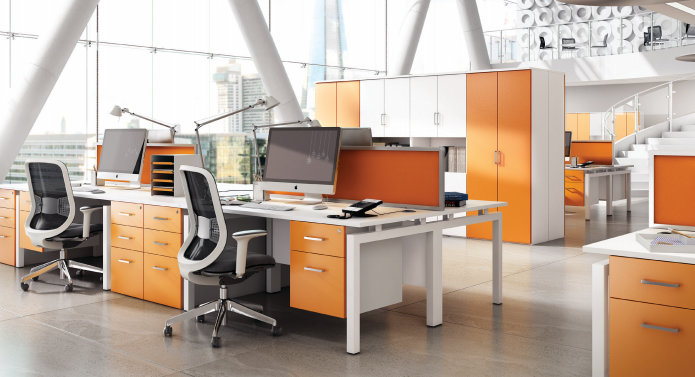Choosing the right office furniture is a critical aspect of designing a workspace that promotes productivity, comfort, and a positive work environment. Whether you’re setting up a home office, redesigning a corporate space, or just looking to upgrade a few pieces, here are some essential tips and insights to help you make the best choices.
1. Assess Your Needs
Before diving into the world of office furniture, take some time to assess your specific needs. Consider the type of work you’ll be doing, the number of people using the space, and any specific requirements such as storage, privacy, or collaborative areas.
- Work Type: A designer might need a large desk and ample storage, while a customer service representative might prioritize a comfortable chair and a smaller workstation.
- Number of Users: Ensure the furniture can accommodate everyone comfortably, with enough space for movement and interaction.
2. Prioritize Ergonomics
Ergonomic furniture is designed to support the body and reduce discomfort and fatigue. This is crucial for maintaining health and productivity, especially if you spend long hours at your desk.
- Chairs: Look for adjustable chairs with lumbar support, adjustable height, and armrests.
- Desks: Consider sit-stand desks to allow for movement and flexibility throughout the day.
- Accessories: Ergonomic keyboards, mouse pads, and monitor stands can also make a significant difference.
3. Quality and Durability
Investing in high-quality, durable furniture can save you money in the long run. Look for pieces made from robust materials that can withstand daily use.
- Materials: Solid wood, metal frames, and high-quality upholstery are indicators of durable furniture.
- Warranty: Check if the furniture comes with a warranty, which can be a good indicator of its expected lifespan.
4. Aesthetics and Style
The look and feel of your office can significantly impact morale and productivity. Choose furniture that aligns with the overall style and branding of your business.
- Color Scheme: Neutral colors can create a calm environment, while pops of color can inspire creativity and energy.
- Design: Sleek, modern designs might appeal to tech startups, while traditional designs might suit law firms or financial institutions.
5. Functionality and Flexibility
Modern office environments often require flexibility. Look for furniture that can adapt to different tasks and accommodate changing needs.
- Modular Furniture: Desks and storage units that can be reconfigured can help you adapt the space as your needs change.
- Multi-functional Pieces: Furniture that serves multiple purposes, such as desks with built-in storage, can save space and increase efficiency.
6. Space Planning
Efficient use of space is essential for creating a comfortable and productive office. Plan your layout carefully to ensure a good flow and easy access to necessary items.
- Floor Plan: Use software or consult a professional to create a floor plan that maximizes space and functionality.
- Zones: Divide the office into zones for different activities, such as workstations, meeting areas, and break rooms.
7. Sustainability
More businesses are prioritizing sustainability in their operations, and this includes office furniture. Consider eco-friendly options that reduce environmental impact.
- Materials: Look for furniture made from recycled or sustainable materials.
- Manufacturing: Choose companies that follow environmentally friendly manufacturing processes.
8. Budget
While it’s important to invest in quality, it’s also crucial to stick to your budget. Compare prices and look for sales or bulk discounts.
- Cost vs. Value: Balance cost with value. Sometimes spending a little more upfront can save you money in the long run due to better durability and comfort.
- Financing Options: Some furniture companies offer financing options that can help you spread out the cost.
Final Thoughts
Choosing the right office furniture involves a mix of practicality, aesthetics, and comfort. By carefully considering your needs, prioritizing ergonomics, and planning your space effectively, you can create a workspace that boosts productivity, enhances well-being, and reflects your brand’s identity. Happy furnishing!
